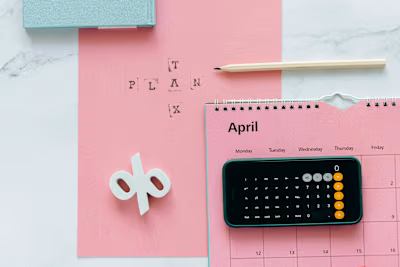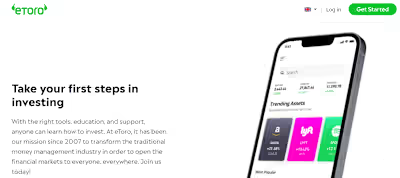GiveTaxFree Fundraising and Donor Guide
A beginner’s guide to fundraising and donating via GiveTaxFree
Have you or someone you know fallen on hard times?
Life can sometimes throw a curveball when we least expect it, whether it is a loss of steady income, sudden illness, property damage … the list goes on.
At GiveTaxFree we believe that when enough kind-hearted people join forces they can make a difference even in the most complex situations.
If you have never raised or donated money via our platform this guide includes all you need to know to create or support a cause you care about.
Read on to learn more about our system, secrets of creating a successful campaign and making donations.

How it works
GiveTaxFree is a unique fundraising website providing benefits for both the recipients and the donors. We hold a special non-profit status granted by the IRS which means that the funds raised via our site are tax-free and donors from the USA can deduct their donation from their tax.
This platform serves everyone looking to raise funds for a legitimate need which we define as something essential to live a healthy life, provide for a family or stay safe. For example, you can seek help with paying for medical bills, food, housing, rent, home repairs, emergency travel, security, safety and so on.
Once you reach your fundraising goal we can either send the donations to your bank account via Wells Fargo DirectPay or send you a cheque via US Mail on a weekly basis.
If you are a donor we will email you a tax donation letter after receiving your contribution.
How to create a crowdfunding campaign
In order to raise funds via GiveTaxFree you need to create a profile first.
Once that’s done add key details about your campaign:
Title - your campaign name
Goal - the sum you want to raise
Donation Type - all applicable cause(s) you need the money for
Feature image - an image to display on your campaign page
Description - your story
*this is the most important section so please read the point ‘How to write a campaign for success’ for some useful writing advice
There is also optional information you can submit:
Youtube/Rumble/Vimeo video url - a link to a video about your cause
More images - additional images can be added using the button above the ‘Description’ field
Finally, submit your campaign for approval.

How to write for success
Success of a crowdfunding campaign largely depends on how well you tell your story.
We know that summarising a difficult life situation can be complicated. Please be advised to follow the structure below to keep your writing on point.
1.Title
A good title is key to make potential donors stop and read your plea. Therefore, it needs to evoke emotions and sound personal.
Consider the following to determine if your title really works:
How does it make you feel?
Does it tell or hint at your story?
If you saw it, would you be interested to click on it?
Here are some examples to help you out.
Weak: Please help with my hospital expenses
Strong: Kick Cancer to the Curb for [name]
Weak: Need help with paying my rent!
Strong: Help a single mom keep her job
2. Backstory
Introduce yourself and explain what you are raising money for. If you are running a campaign for someone else, include information about how you know them. Use this space to emotionally connect with the reader. Describe long-term challenges and particularly the turning point when you realized that you (or a person you represent) needed help and could not live under the same circumstances anymore.
3. Needs
Explain which resources are needed to address your problem and why. Remember to include any information about what you have done to help the situation by yourself before asking for help. People are more likely to donate if they can see that you’ve exhausted all of your other resources.
4. Costs
Mention specific expenses you need to cover and, if possible, provide proof. This makes donors feel confident that the money will truly be used for the intended purpose. For example, to demonstrate the cost of repairing your car, include a photo of an estimate from a car mechanic.
5. Impact
Ensure that your pitch helps readers understand how their contribution can improve the immediate circumstances of a person who receives the funds. Be clear, open and personal. Donors want to see how they can alleviate a strain that’s on the recipient and their loved ones due to the lack of funds.
6. Thank you note
Express your gratitude and make donors feel appreciated to motivate them to spread the word. You can also call for shout-outs via social media which can help you reach more people who might want to help. To do so, point the readers to the social media sharing buttons located at the bottom of each campaign page.
Ideally, your story should have at least 400 words. In terms of formatting, splitting the text into paragraphs makes it easier to read. As a rule of thumb, a paragraph should have 4-5 sentences.
What makes a crowdfunding campaign effective
There are a lot of people who use crowdfunding nowadays so, to make your campaign stand out among the others, we recommend following best practice outlined below.
1. Having a legitimate need
In order to have your campaign approved for publishing on our platform we need to see that your need qualifies legitimate. You should explain the special circumstances that you are facing because this need is not addressed and how serious is their long-term impact.
Below are some examples of how what we would approve and reject as a legitimate need:
Approved: A purchase of an inexpensive used car to travel to work because public transport is not an option.
Declined: A purchase of a used car even though there is public transport available which could be used instead.
Approved: A purchase of a guide dog as prescribed by your doctor
Declined: A purchase of an animal as a pet
Approved: Raising funds to pay for specific types of treatment, related to a particular diagnosis, which are not covered by your insurance.
Declined: Raising funds to cover medical expenses due to ill health, no diagnosis given
2. Use correct length and formatting
Ideally, your story should have at least 400 words and a maximum of 1000 words. In terms of formatting, splitting the text into paragraphs makes it easier to read. As a rule of thumb, a paragraph should have 4-5 sentences.
3. Polish your draft
To make sure your pitch reads well ask yourself following questions:
● Is your story clear and concise?
● Does it sound relatable?
● Is there anything that could put people off?
● Does the story create emotional connection with the reader?
● Does the story include all key details to paint a complete picture for the reader?
Last but not least, always check your spelling and grammar before you publish! There are many free spelling and grammar checkers that you can use.
4. Share regular updates
Keep your donors and potential donors in the loop on a regular basis. You can update your campaign page with information about:
● Any changes in your situation or circumstances (for better or worse)
● How any donations received have been spent
● Thank you shout-outs to anyone who has donated or shared your campaign
● A call for more shares including the campaign link
5. Ask for help
Having someone to help you can benefit your campaign in several ways. For instance, if your campaign is run on your behalf by a relative or a friend, it makes your cause look more sympathetic. Also, it puts you under less pressure than if you were asking for money personally. Alternatively, if you want to run a campaign yourself, it is useful to get another pair of eyes to read it before publishing.
6. Promote your campaign
Once your campaign is live you need to spread the word among as many people as possible. Start by sending the link to the campaign with your family, friends and ask them to share it via their social media profiles.
Another option is to create a social media page for your cause and promote it via online communities dedicated to fundraising. Facebook groups are usually the most effective in this regard.
You can also send out an email to your contacts and use an attention-grabbing subject line such as “Can you help me out real quick?” or “Hi [friend’s name], I need a quick favor”. Give your contacts a brief version of the story and include a link to share the campaign via social media or email.
If you are looking to raise a higher amount, consider reaching out to local charities or charitable organizations.
After making some progress it is useful to contact local media outlets or influencers and provide them with a story about your issue, progress you’ve made and call for donations.
7. Choose good photos
Your main photo should be well-lit and clearly show the beneficiary of the fundraiser (you, your family, or whoever you are raising money for).
In case you wish to include photos in your campaign updates only use those related to your fundraiser.
If you run a campaign on behalf of someone else, ensure that you use photos that you are allowed to share.
8. Record a campaign video
A video can help you to communicate your message quickly and make it more personal.
Also, it is the most effective option to reach a busy audience with a short attention span.
Your video does not need to be complicated. Essentially, you can share a shortened version of your campaign pitch.
To shoot your video you can use a camera phone and place it into a tripod whilst you speak or have someone hold it for you.
Film horizontally so the video plays better on YouTube and other platforms.
Avoid bright light on the subject’s faces and make sure you record in a quiet place.
How to donate
To donate, follow the link to the campaign of your choice or view all our campaigns to select the one you want to support.
Click the ‘read more’ link under the campaign’s short description to view the related page.
Under ‘Campaign Status’ fill in the sum you want to donate. Leaving a comment is optional but don’t be shy, a kind message can brighten up someone’s day.
Finally, add your email, address and payment information.
Please note that after making a donation you will receive your tax donation letter via email. Also, as a donor you will never be charged any fees.
Like this project
Posted May 31, 2024
A user guide for crowdfunding campaign creators and/or donors
Likes
0
Views
19





